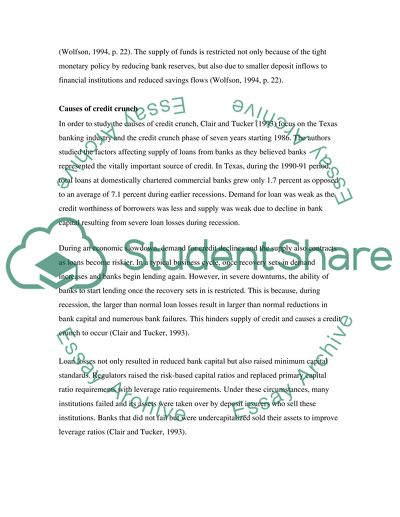Cite this document
(Credit Crunch Effects on a Decision-Making Process Term Paper Example | Topics and Well Written Essays - 2750 words, n.d.)
Credit Crunch Effects on a Decision-Making Process Term Paper Example | Topics and Well Written Essays - 2750 words. https://studentshare.org/finance-accounting/1546001-discuss-how-the-credit-crunch-could-affect-corporate-decision-making-over-the-next-few-years
Credit Crunch Effects on a Decision-Making Process Term Paper Example | Topics and Well Written Essays - 2750 words. https://studentshare.org/finance-accounting/1546001-discuss-how-the-credit-crunch-could-affect-corporate-decision-making-over-the-next-few-years
(Credit Crunch Effects on a Decision-Making Process Term Paper Example | Topics and Well Written Essays - 2750 Words)
Credit Crunch Effects on a Decision-Making Process Term Paper Example | Topics and Well Written Essays - 2750 Words. https://studentshare.org/finance-accounting/1546001-discuss-how-the-credit-crunch-could-affect-corporate-decision-making-over-the-next-few-years.
Credit Crunch Effects on a Decision-Making Process Term Paper Example | Topics and Well Written Essays - 2750 Words. https://studentshare.org/finance-accounting/1546001-discuss-how-the-credit-crunch-could-affect-corporate-decision-making-over-the-next-few-years.
“Credit Crunch Effects on a Decision-Making Process Term Paper Example | Topics and Well Written Essays - 2750 Words”. https://studentshare.org/finance-accounting/1546001-discuss-how-the-credit-crunch-could-affect-corporate-decision-making-over-the-next-few-years.


